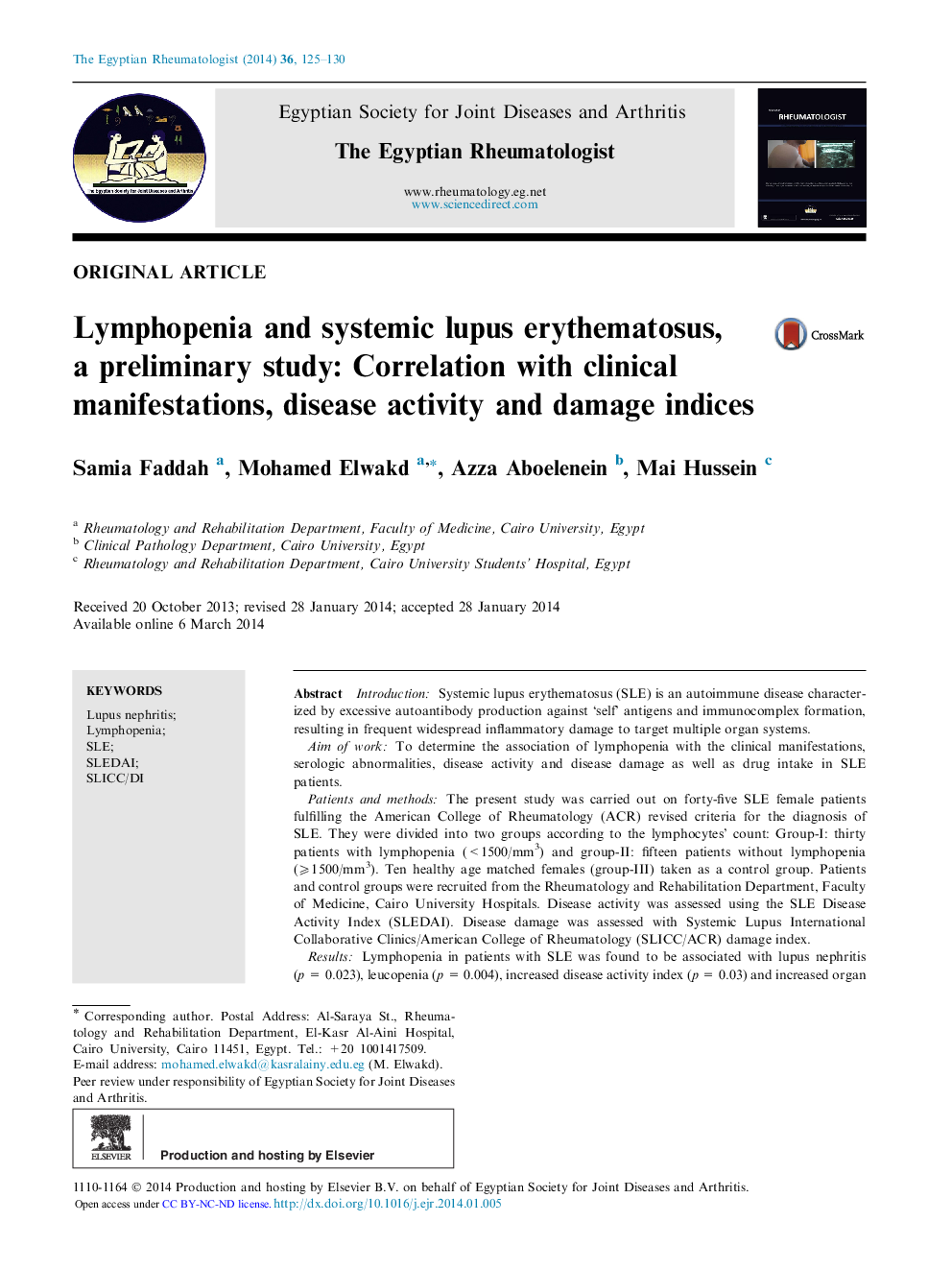| کد مقاله | کد نشریه | سال انتشار | مقاله انگلیسی | نسخه تمام متن |
|---|---|---|---|---|
| 3348983 | 1216270 | 2014 | 6 صفحه PDF | دانلود رایگان |
IntroductionSystemic lupus erythematosus (SLE) is an autoimmune disease characterized by excessive autoantibody production against ‘self’ antigens and immunocomplex formation, resulting in frequent widespread inflammatory damage to target multiple organ systems.Aim of workTo determine the association of lymphopenia with the clinical manifestations, serologic abnormalities, disease activity and disease damage as well as drug intake in SLE patients.Patients and methodsThe present study was carried out on forty-five SLE female patients fulfilling the American College of Rheumatology (ACR) revised criteria for the diagnosis of SLE. They were divided into two groups according to the lymphocytes’ count: Group-I: thirty patients with lymphopenia (<1500/mm3) and group-II: fifteen patients without lymphopenia (⩾1500/mm3). Ten healthy age matched females (group-III) taken as a control group. Patients and control groups were recruited from the Rheumatology and Rehabilitation Department, Faculty of Medicine, Cairo University Hospitals. Disease activity was assessed using the SLE Disease Activity Index (SLEDAI). Disease damage was assessed with Systemic Lupus International Collaborative Clinics/American College of Rheumatology (SLICC/ACR) damage index.ResultsLymphopenia in patients with SLE was found to be associated with lupus nephritis (p = 0.023), leucopenia (p = 0.004), increased disease activity index (p = 0.03) and increased organ damage index (p = 0.02), and was not associated with other clinical lupus manifestations, serological abnormalities or with the drug intake (p > 0.05).ConclusionLymphopenia in SLE was associated with lupus nephritis, leucopenia and increased both disease activity and organ damage indices.
Journal: The Egyptian Rheumatologist - Volume 36, Issue 3, July 2014, Pages 125–130
